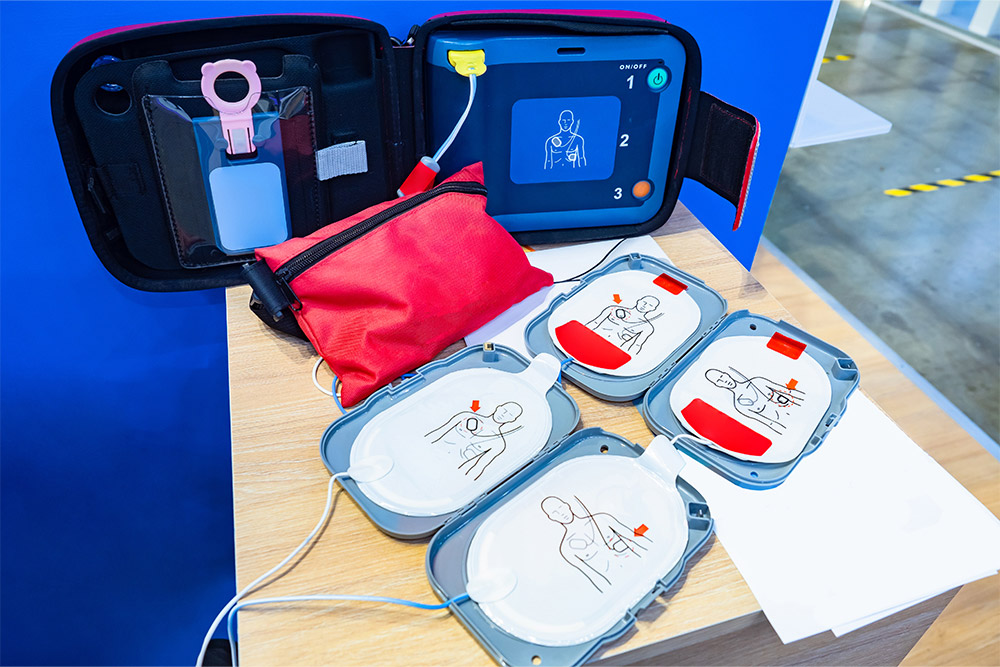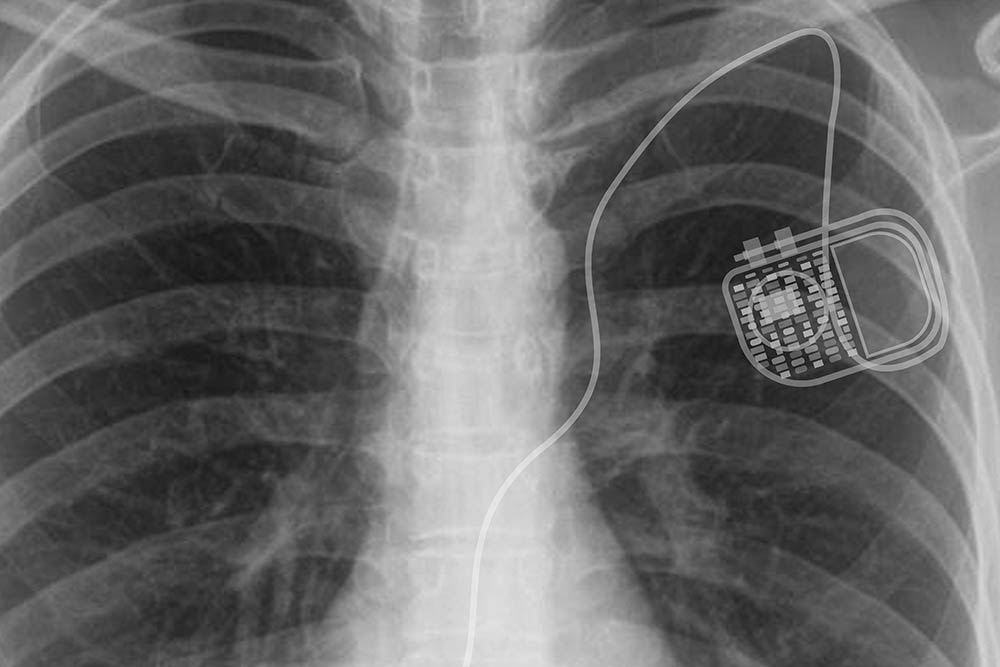
Defibrillators are becoming more and more commonplace. You may have spotted one in your local supermarket, train station, gym, your place of work or even at a school. You may not even be aware of numerous others around you.
The UK government completed the roll-out of defibrillators for schools in April 2023. In fact, there are around 100,000 automated external defibrillator (AED) devices in the UK. And there have been recent campaigns to substantially increase the numbers. This is because they can save a life when used in the right situation. But do you understand what defibrillators are? And would you know how to use one if you needed to?
In this blog, we answer the following questions: What is a defibrillator? Why are they important? What are the different types and how does a defibrillator work?
How Do Defibrillators Save Lives?
If someone’s heart has stopped or is struggling to beat, a defibrillator can send an electrical charge that helps to return it to a normal rhythm. If used quickly and correctly, defibrillators can return a cardiac arrest victim to a stable condition until the emergency services arrive and take over.
A Deadly Situation
Heart disease remains one of the leading causes of death in the UK. According to the British Heart Foundation, over 30,000 cardiac arrests occur annually out of hospital. Of these, fewer than one in 10 people survive. At the same time, only around 40% of bystanders who witness a cardiac arrest would feel confident performing CPR.
Defibrillators Are Surprisingly Effective
Various studies have found that using defibrillators significantly increases these chances of survival. In fact, survival rates can be as high as 90% when used in the first minute of cardiac arrest.
The chances of survival decrease dramatically, to around 16%, if a defibrillator is used within the first 3-5 minutes. So, time is indeed of the essence.
Types of Defibrillators
There are three types of defibrillators. Here is a rundown of what they are and how they work:
Automated External Defibrillators (AEDs)
AEDs are lightweight, portable, battery-operated devices that check the heart’s rhythm and send a shock to it, if necessary, to return it to a normal rhythm.

AEDs are simple enough to use. They come with sticky pads with sensors called electrodes that stick to the chest. The electrodes send information about the person’s heart to the AED’s internal computer. This information is quickly analysed to determine whether an electric shock is needed. If so, the electrodes deliver a shock.
Implantable Cardioverter Defibrillators (ICDs)
Like pacemakers, ICDs deliver electrical energy pulses to regulate abnormal heart rhythms. The main difference between the two is that pacemakers only deliver low-energy shocks. In contrast, ICDs deliver low and high energy shocks, depending on what is required.

ICDs are small devices placed in the chest or stomach to treat people suffering from life-threatening abnormal heart rhythms or arrhythmia. This is a hazardous condition because it can interrupt the normal flow of blood from the heart to the rest of the body or cause the heart to stop.
ICDs work by monitoring the heart rate. They are connected to the heart by tiny wires and continuously check the rhythm and rate of the heart through electrodes. If a dangerous heart rhythm is detected, the ICD does one of three things:
- Pacing – delivers a series of low-energy electrical pulses at a rapid rate to correct the heart rhythm
- Cardioversion delivers one or more small shocks to bring the heart back to a normal rhythm
- Defibrillation – deliver one or more large electric shocks to get the heart back to its normal rhythm.
Wearable Cardioverter Defibrillators – WCDs
WCDs are worn like a vest under your clothing. They have sensors that attach to your skin that are connected to a unit that monitors your heart’s rhythm. Any dangerous changes in your heart rate prompt the WCD to deliver a shock. A WCD is basically a wearable defibrillator.
WCDs are given to people waiting for an ICD to be fitted or with a high risk of sudden cardiac arrest for a short period. They must be worn 24 hours a day, except when in water, such as when bathing or swimming. They can be worn for two to six weeks or, in some cases, longer. Information from the WCD goes straight to the medical professionals monitoring the wearer.
Using an AED in an Emergency Situation
AEDs are pretty simple to use, which is excellent, given their impact can be huge. If, in the unfortunate event, you see or are with someone having a cardiac arrest, make sure the emergency services are called. Get started on CPR while someone looks for the nearest AED.
Once you have the AED, activate it by opening the device or turning it on.
Devices technically do the same things, but they vary in design. It’s essential to follow the audible instructions.
Place the sticky pads on the chest of the person requiring medical assistance. Stop delivering CPR, ensure you are not touching the person and leave the defibrillator to check their heart rate. The AED will decide if a shock is needed. If so, press the shock button. If necessary, you may have to resume CPR.
The emergency operator will continue to assist you until ambulance personnel arrive to take over.
If you don’t remember any of this, don’t worry. Defibrillators are designed to be easy to use. And they won’t harm a person once applied.
Your Chance to Learn Something Truly Lifesaving
Using a defibrillator is straightforward, but you need to be confident. Training boosts confidence; in this case, learning to use a defibrillator correctly can increase the survival rate of someone experiencing cardiac arrest. You can gain lifesaving skills with our Defibrillator training course.
You’ll learn what a defibrillator is, how they function and how to use them. The course is perfect for existing first aiders and anyone keen to offer lifesaving assistance to others. Knowing how to use a defibrillator confidently is the first step to making a vital difference in someone’s life.
Did you know there’s a national defibrillator database that pinpoints where the nearest device is to your location?



















































































































































































































































































































































































































































































































































































































































































































































